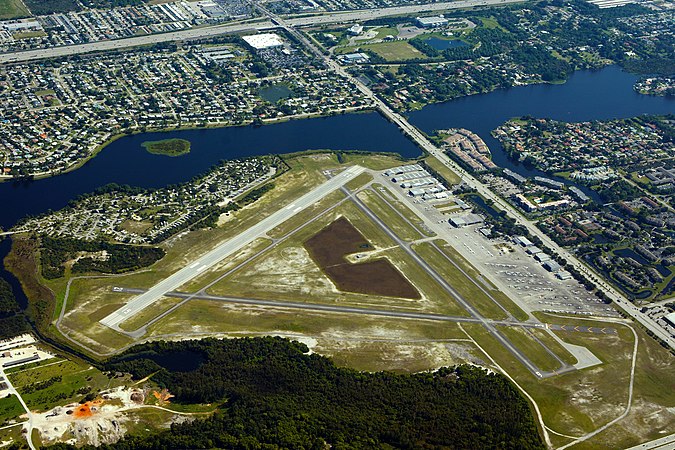Fundamentals of Airports
| A Wikibookian believes this page should be split into smaller pages with a narrower subtopic. You can help by splitting this big page into smaller ones. Please make sure to follow the naming policy. Dividing books into smaller sections can provide more focus and allow each one to do one thing well, which benefits everyone. |
Introduction
[edit | edit source]Recent surveys have revealed that there are close to 42,000 airports in the world, and many professionals in the aviation and aeronautical science industries are tasked with understanding both elementary and advanced concepts in airport functionality[1]. Airfields may be designated for public, private, and/or military use, and may house a number of support facilities such as fixed-base operators, management facilities, passenger terminals, and navigational aids. Many airports are designed with a complicated infrastructure that permits all of the airports users (such as airlines, passengers, and general aviation operators) to gainfully interact with the field's individual facilities.
This development-stage textbook is designed to allow the reader to understand a number of concepts fundamental to the workings of an airport, such as:
- Airport Regulatory Bodies
- Navigational Equipment and Use
- Airport Ownership
- The Distinction Between Public, Private, and Military Airports
- Fixed-Base Operators and General Aviation Users
- Passenger Terminals, Security, and Airline Users
- Airport Markings
- Air Traffic Control and Taxiway/Runway Use
Table of Contents
[edit | edit source]| This book is an undeveloped draft or outline. You can help to develop the work, or you can ask for assistance in the project room. |
